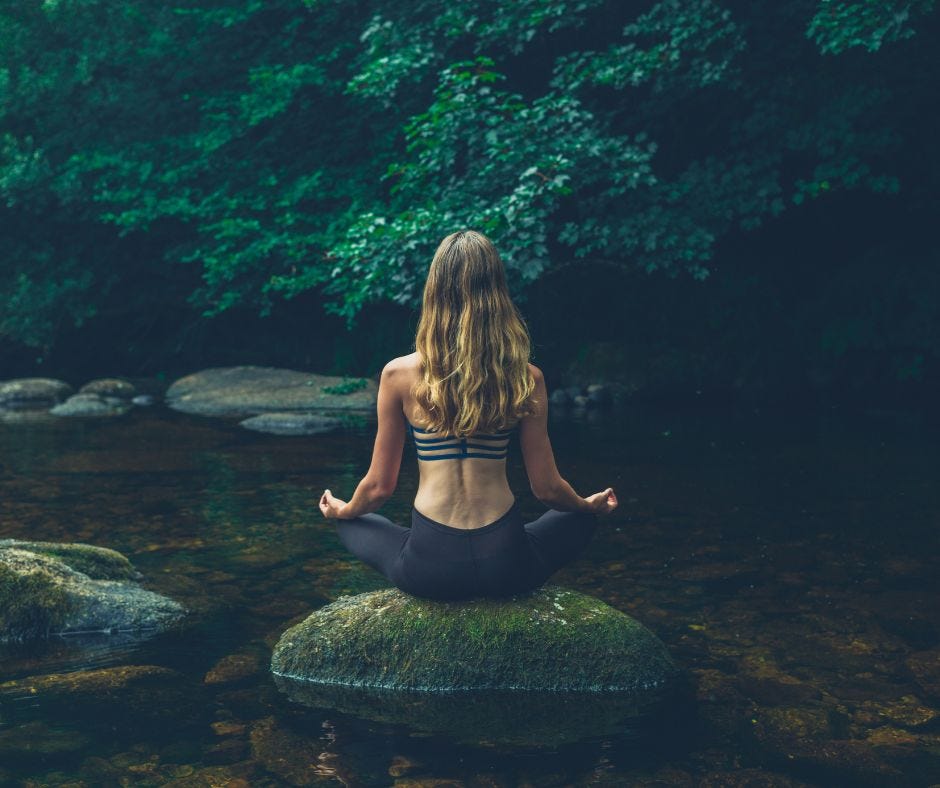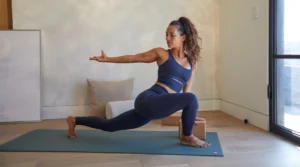In a world that never seems to slow down, finding a moment of stillness can feel like chasing a mirage. I remember my first meditation retreat—sitting cross-legged in a quiet room, surrounded by strangers, wondering if I’d made a mistake. My mind was a whirlwind of to-do lists and notifications, but by day three, something shifted. The silence became a friend, and I felt lighter, like I’d shed a weight I didn’t know I was carrying. Meditation retreats offer this rare gift: a chance to pause, reflect, and reconnect with yourself. Whether you’re a beginner seeking calm or a seasoned practitioner craving depth, the right retreat can transform your life. Below, I’ve curated a guide to the world’s best meditation retreats for 2025, drawing from personal experiences, traveler reviews, and expert insights. Let’s explore sanctuaries of serenity across the globe, from lush jungles to sacred mountains.
Why Choose a Meditation Retreat?
Meditation retreats are more than vacations—they’re immersive experiences designed to cultivate mindfulness, reduce stress, and foster self-discovery. Unlike a typical getaway, retreats prioritize being over doing, offering structured programs or flexible solitude in serene settings. They’re perfect for anyone needing a mental reset, whether you’re battling burnout or seeking spiritual growth. With options ranging from silent Vipassana retreats to yoga-infused wellness escapes, there’s a retreat for every soul.
Benefits of Meditation Retreats
Retreats provide a unique environment to deepen your practice, free from daily distractions. Here’s why they’re worth your time:
- Stress Reduction: Studies show meditation lowers cortisol levels, easing anxiety and improving sleep.
- Community Connection: You’ll meet like-minded individuals, fostering meaningful bonds.
- Skill Development: Learn techniques like mindfulness or breathwork to integrate into daily life.
- Nature’s Embrace: Many retreats are set in stunning landscapes, enhancing relaxation.
Types of Meditation Retreats
Not all retreats are the same. Understanding the types helps you choose the right fit:
- Silent Retreats: Focus on introspection with minimal verbal communication, ideal for deep reflection.
- Mindfulness-Based: Emphasize present-moment awareness, often incorporating yoga or breathwork.
- Buddhist Retreats: Rooted in traditions like Zen or Theravāda, blending meditation with teachings.
- Luxury Wellness: Combine meditation with spa treatments and gourmet meals for a pampered experience.
Top Meditation Retreat-deepens in the World for 2025
Below, I’ve handpicked 10 meditation retreats that stand out for their unique offerings, stunning locations, and transformative impact. Each has been vetted for quality, authenticity, and guest satisfaction, ensuring you find a sanctuary that resonates.
Spirit Rock Meditation Center, California, USA
Tucked in the golden hills of Marin County, Spirit Rock is a haven for Vipassana (Insight) meditation. Its 412-acre campus, once sacred to Native Americans, feels alive with calm—wild deer roam unafraid, mirroring the peace you’ll cultivate. I attended a week-long silent retreat here, and the rigorous yet nurturing schedule of sitting, walking, and mindful eating reshaped my perspective. Led by teachers like Jack Kornfield, retreats range from one day to two months, catering to all levels.
- Why Go: Beginner-friendly, with sliding-scale fees and scholarships.
- Cost: $100–$8,000, depending on program and accommodations.
- Best For: Those seeking a structured, Buddhist-inspired experience.
Plum Village, Dordogne, France
Founded by Zen master Thich Nhat Hanh, Plum Village is a global beacon of mindfulness. Nestled in the French countryside, its rolling hills and communal meals create a warm, inviting atmosphere. I recall sharing silent lunches with monks, each bite a meditation in itself. Retreats here blend meditation, dharma talks, and community living, emphasizing “engaged Buddhism” for personal and collective healing.
- Why Go: Welcomes families and beginners; emphasizes joy and connection.
- Cost: Donation-based, typically €300–€600 for a week.
- Best For: Those craving a holistic, community-driven retreat.
Wat Suan Mokkh, Surat Thani, Thailand
For an authentic, no-frills experience, Wat Suan Mokkh’s 10-day silent retreats are unmatched. Founded by Ajahn Buddhadasa, this forest hermitage offers rustic conditions—think straw mats and 4 a.m. wake-ups. I’ll admit, the wooden pillow tested my resolve, but the clarity gained from deep Vipassana practice was worth it. English instruction makes it accessible to international visitors.
- Why Go: Free (donation-based); deeply immersive and authentic.
- Cost: No charge, donations appreciated.
- Best For: Seasoned meditators seeking discipline.
Tushita Meditation Centre, Dharamsala, India
Perched in the Himalayas near the Dalai Lama’s home, Tushita is a spiritual gem. Surrounded by pine forests, it offers courses in Tibetan Mahayana Buddhism, blending meditation with philosophy. I joined a group retreat here, and the morning chants against the Dhauladhar mountains felt otherworldly. Drop-in sessions and 10-day courses cater to all levels.
- Why Go: Immersive Tibetan Buddhist teachings in a sacred setting.
- Cost: ₹5,000–₹15,000 ($60–$180) for 10 days.
- Best For: Spiritual seekers interested in Tibetan culture.
Holy Isle, Scotland
Holy Isle, off Scotland’s west coast, is a sanctuary of peace with a 6th-century spiritual legacy. Run by the Centre for World Peace and Health, it combines mindfulness, yoga, and nature. I hiked to its holy well, said to have healing waters, and felt a profound stillness. Retreats operate April to October, with options for personal or group experiences.
- Why Go: Unique blend of spirituality and Nordic nature; affordable.
- Cost: £50–£445, depending on length and program.
- Best For: Those seeking a serene, nature-focused retreat.
Kamalaya Wellness Sanctuary, Koh Samui, Thailand
Kamalaya blends luxury with mindfulness on Thailand’s idyllic Koh Samui. Its holistic approach includes meditation, yoga, and detox programs, set against lush jungles and beaches. I indulged in their breathwork sessions, which left me rejuvenated. Perfect for those wanting pampering alongside practice, Kamalaya offers personalized wellness plans.
- Why Go: Luxury meets spirituality; tailored programs for all levels.
- Cost: $1,000–$5,000 for a week, all-inclusive.
- Best For: Wellness enthusiasts seeking a high-end experience.
Blue Cliff Monastery, New York, USA
In the Catskill Mountains, Blue Cliff Monastery follows Thich Nhat Hanh’s teachings. Its 14-hour daily silent periods and walking meditations in the forest are transformative. I found solace in their simple gathas, like “Breathing in, I am present.” Retreats range from weekends to months, with a focus on mindfulness and community.
- Why Go: Affordable, with a focus on present-moment awareness.
- Cost: $100–$500, sliding scale.
- Best For: Beginners and those seeking silence.
Insight Meditation Society (IMS), Massachusetts, USA
IMS in Barre, Massachusetts, is a cornerstone of American meditation culture. Its simple, wooded campus fosters deep Vipassana practice. I attended a weekend retreat and was struck by the clarity of the teachers’ guidance. With programs for all levels and a donation-based model, IMS is accessible and impactful.
- Why Go: Renowned teachers; beginner-friendly with scholarships.
- Cost: $200–$1,500, donation-based.
- Best For: Those wanting a structured, Insight-focused retreat.
Kopan Monastery, Kathmandu, Nepal
Kopan Monastery offers a vibrant introduction to Tibetan Buddhism. I joined a two-week retreat here, surrounded by a hundred like-minded souls, and found the early morning meditations transformative. Affordable and welcoming, it combines meditation, mindfulness, and vegetarian meals in a stunning Himalayan setting.
- Why Go: Budget-friendly; rich cultural immersion.
- Cost: £85–£200 for two weeks.
- Best For: Beginners seeking a cultural experience.
Esalen Institute, Big Sur, California, USA
Esalen, perched on California’s dramatic Big Sur coast, blends meditation with wellness workshops and hot springs. I soaked in the cliffside baths after a mindfulness session, feeling utterly renewed. Programs include yoga, forest bathing, and guided meditation, catering to those seeking a transformative escape.
- Why Go: Stunning ocean views; diverse wellness offerings.
- Cost: $540–$8,000, depending on accommodations.
- Best For: Those wanting a blend of meditation and luxury.
Comparison of Top Meditation Retreats
| Retreat | Location | Duration | Cost | Focus | Best For |
|---|---|---|---|---|---|
| Spirit Rock | California, USA | 1 day–2 months | $100–$8,000 | Vipassana, Mindfulness | Structured, Buddhist practice |
| Plum Village | Dordogne, France | 1–2 weeks | €300–€600 (donation) | Mindfulness, Zen | Community-driven, beginners |
| Wat Suan Mokkh | Surat Thani, Thailand | 10 days | Donation-based | Vipassana, Silence | Seasoned meditators |
| Tushita Meditation Centre | Dharamsala, India | 1–10 days | ₹5,000–₹15,000 | Tibetan Buddhism | Spiritual seekers |
| Holy Isle | Scotland, UK | Weekend–10 weeks | £50–£445 | Mindfulness, Nature | Nature lovers, affordable |
Pros and Cons of Meditation Retreats
Pros
- Deep Focus: Distraction-free environments enhance meditation practice.
- Expert Guidance: Learn from experienced teachers, even as a beginner.
- Community: Connect with others on similar journeys.
- Lasting Impact: Gain tools to sustain mindfulness at home.
Cons
- Cost: Some retreats, like luxury options, can be expensive.
- Intensity: Silent or long retreats may feel overwhelming for beginners.
- Time Commitment: Extended programs require significant time off.
- Austerity: Rustic retreats (e.g., Wat Suan Mokkh) may lack comfort.
How to Choose the Right Meditation Retreat
Selecting a retreat depends on your goals, budget, and experience level. Consider these factors:
- Experience Level: Beginners should opt for guided or mindfulness-based retreats, while advanced practitioners might prefer silent Vipassana.
- Budget: Donation-based options like Wat Suan Mokkh or IMS are affordable, while luxury retreats like Kamalaya cater to higher budgets.
- Duration: Short weekend retreats suit busy schedules; longer ones offer deeper immersion.
- Location: Choose a setting that inspires you, whether it’s mountains, forests, or beaches.
- Tradition: Decide if you prefer Buddhist, secular, or holistic approaches.
People Also Ask (PAA)
What is the best meditation retreat for beginners?
The Insight Meditation Society (IMS) in Massachusetts is ideal for beginners, offering structured guidance, renowned teachers, and a donation-based model. Its welcoming environment and focus on mindfulness make it accessible.
Are meditation retreats worth the cost?
Yes, retreats provide tools for stress relief and personal growth that can last a lifetime. Budget-friendly options like Kopan Monastery or donation-based centers ensure accessibility.
How long should a meditation retreat be?
Weekend retreats (2–3 days) are great for beginners or busy schedules, while 7–10-day retreats offer deeper transformation. Choose based on your availability and goals.
Can I attend a meditation retreat with no experience?
Absolutely! Many retreats, like Plum Village or IMS, are designed for newcomers, offering guided sessions and beginner-friendly teachings.
FAQ Section
What should I pack for a meditation retreat?
Bring comfortable clothing, a journal, and an open mind. Some retreats provide mats and cushions, but check specifics. Avoid electronics to minimize distractions.
Are silent retreats suitable for everyone?
Silent retreats can be intense, especially for beginners. Start with a guided or mindfulness retreat if silence feels daunting.
How do I prepare for a meditation retreat?
Practice basic meditation for 5–10 minutes daily to ease into the experience. Set intentions for what you hope to gain, like stress relief or clarity.
Can meditation retreats help with mental health?
Yes, retreats reduce stress, anxiety, and depression through mindfulness and community support. Always consult a professional for serious mental health concerns.
Where can I find affordable meditation retreats?
Look for donation-based centers like Wat Suan Mokkh or volunteer opportunities at places like Dharmakaya Center. Scholarships are often available.
Tips for a Transformative Retreat Experience
- Set Intentions: Reflect on why you’re attending—stress relief, spiritual growth, or self-discovery.
- Disconnect: Leave your phone off to fully immerse in the experience.
- Be Open: Embrace discomfort; it’s part of growth, whether it’s silence or early mornings.
- Integrate Learnings: Journal daily to process insights and apply them post-retreat.
- Follow Up: Join a local meditation group to sustain your practice. Check Insight Meditation Community for resources.
Bringing It Home: Sustaining Your Practice
The true magic of a retreat lies in what you carry forward. After my Spirit Rock experience, I started meditating 10 minutes daily, using apps like Headspace. Small habits, like mindful breathing during commutes, kept the calm alive. Sister True Vow from Blue Cliff Monastery advises keeping commitments “clear and simple” to maintain mindfulness at home. Find a local sangha or online community to stay connected, and revisit your retreat notes to reignite inspiration.
Final Thoughts
Meditation retreats are portals to peace, offering a rare chance to pause and reconnect in a noisy world. From the rustic simplicity of Wat Suan Mokkh to the luxurious serenity of Kamalaya, there’s a retreat for every seeker. My own journeys—to Spirit Rock, Plum Village, and beyond—taught me that stillness isn’t just a luxury; it’s a necessity. Whether you’re craving silence, community, or a deeper spiritual path, these sanctuaries can guide you home to yourself. Ready to embark? Check BookRetreats.com for bookings or explore Spirit Rock’s programs to start your journey. Your inner peace awaits.








